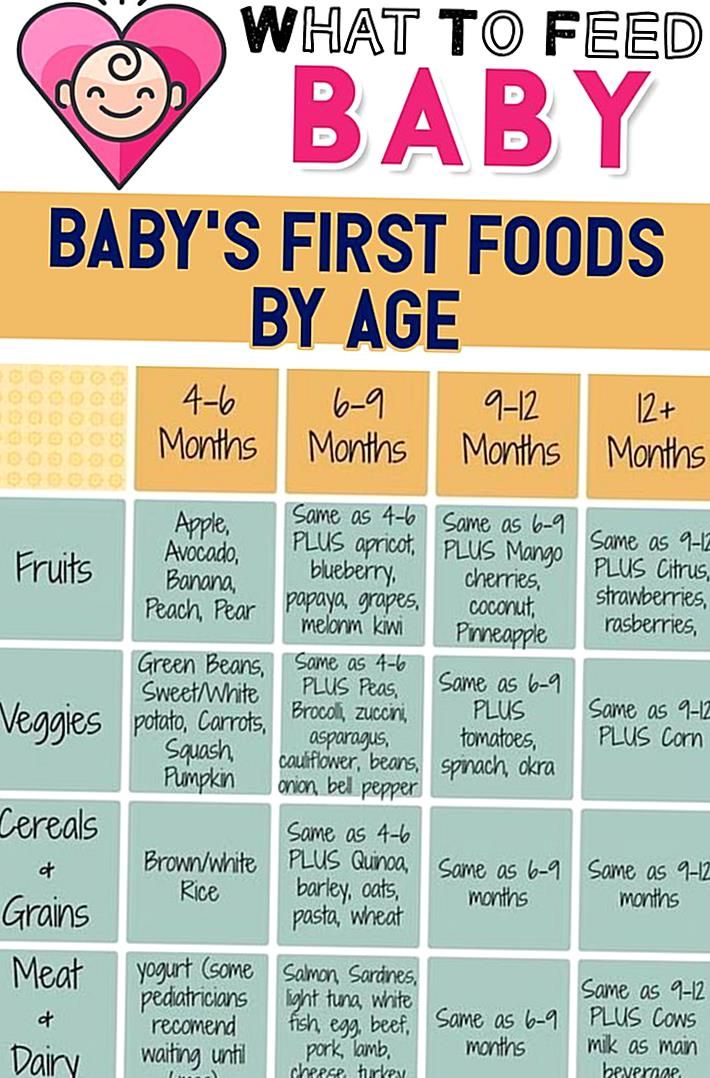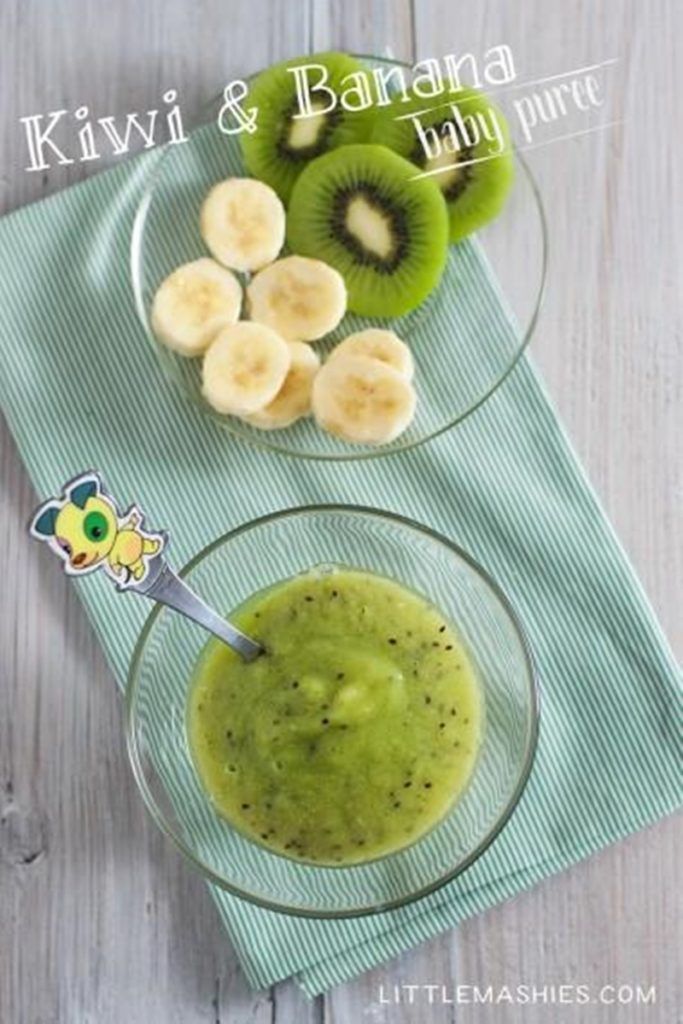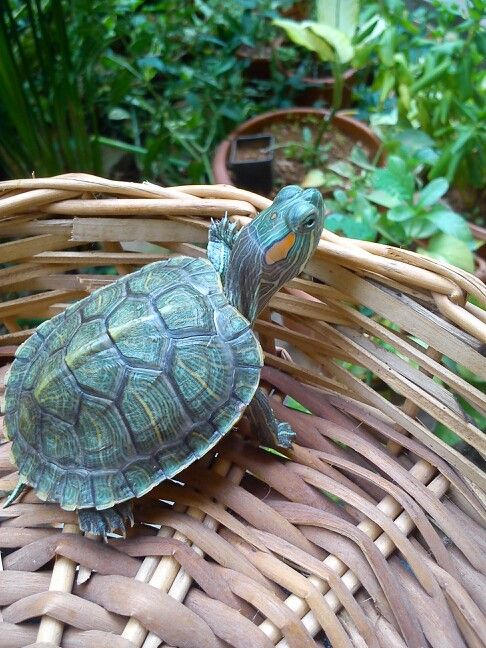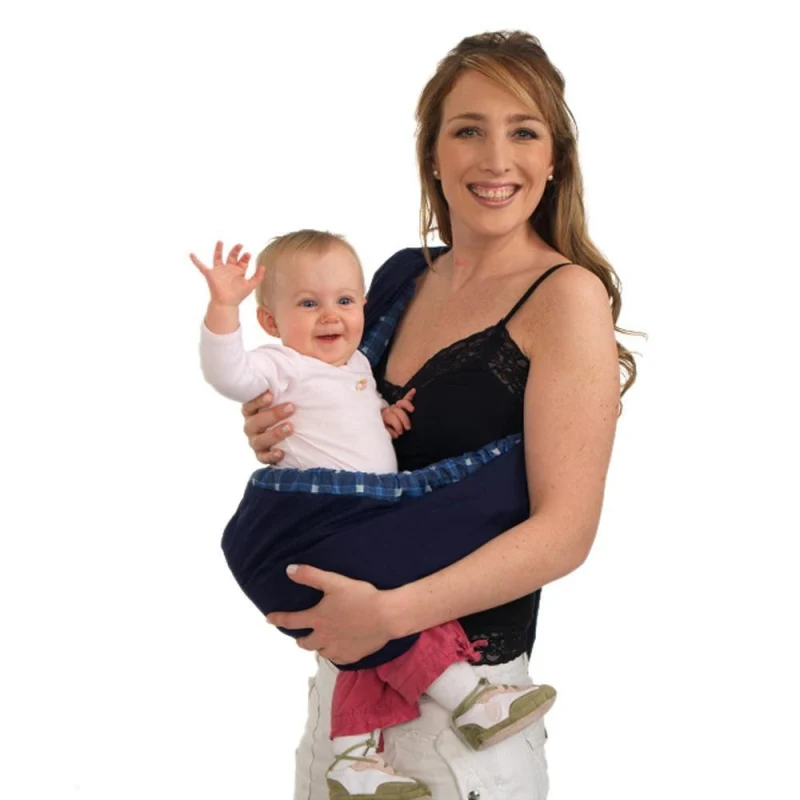Baby feeding steps
Feed in the right way for your child's stage of development
- Birth to 3 months: Feeding your newborn
- 2 to 6 months: Feeding your infant
- 5 to 9 months: Feeding your older baby
- 7 to 15 months: Feeding your almost-toddler
- 11 to 36 months: Feeding your toddler
- 3 to 6 years: Feeding your preschooler
- 6 to 12 years: Feeding your school-age child
- 12 to 17 years: Feeding your adolescent
Video shows you what to do and not do with feeding.
See what to do and not do with feeding.
Birth to 3 Months
Feeding Your Newborn
Help your newborn be calm and stay awake
Your newborn comes out of a quiet, dark place into a world full of sights, sounds and commotion. To do well with eating, she needs help being calm and staying awake. To help her, feed her the way she wants you to.
Do what your baby wants with feeding
Don’t worry about spoiling her. You can’t spoil a tiny baby.
- Pay attention to her cues and feed her when she wants to eat, when she is wide-awake and calm and before she gets upset from crying.
- Sit still during feeding. Keep the feeding smooth and steady.
- Let her eat her way – much or little, fast or slowly, steady or start-and-stop.
- Stop feeding her when she shows you she is finished eating. She will relax, slow down and stop nursing.
- Talk or play awhile after feeding. Put her to bed when she’s calm and drowsy and let her put herself to sleep.
Your baby knows how much to eat
Your baby will eat as much as she needs and grow in the way that is right for her if you maintain a division of responsibility in feeding.You are responsible for the what of feeding – breastmilk or formula. Your baby is responsible for everything else – when, where, how much, how fast.
back to top
To Watch Ashley's Sleep States - Click Here
Videos show you what to do and not do with feeding.
2 to 6 Months
Feeding Your Infant
When your baby is 2 or 3 months old, he begins to learn about love. He watches, smiles, jabbers, and reaches out to get your attention and to keep you close. Your paying attention to him and doing what he wants shows him you love him and teaches him to love you back. Don’t worry about spoiling him. You can’t spoil a tiny baby.
Follow the division of responsibility in feeding
You are responsible for the what of feeding – breastmilk or formula. Your baby is responsible for everything else – when, where, how much, how fast.
Guide feeding based on your baby’s cues
Feed on demand: Go by information coming from your baby to guide feeding
- Feed your baby when he wants to eat, when he is wide-awake and calm.
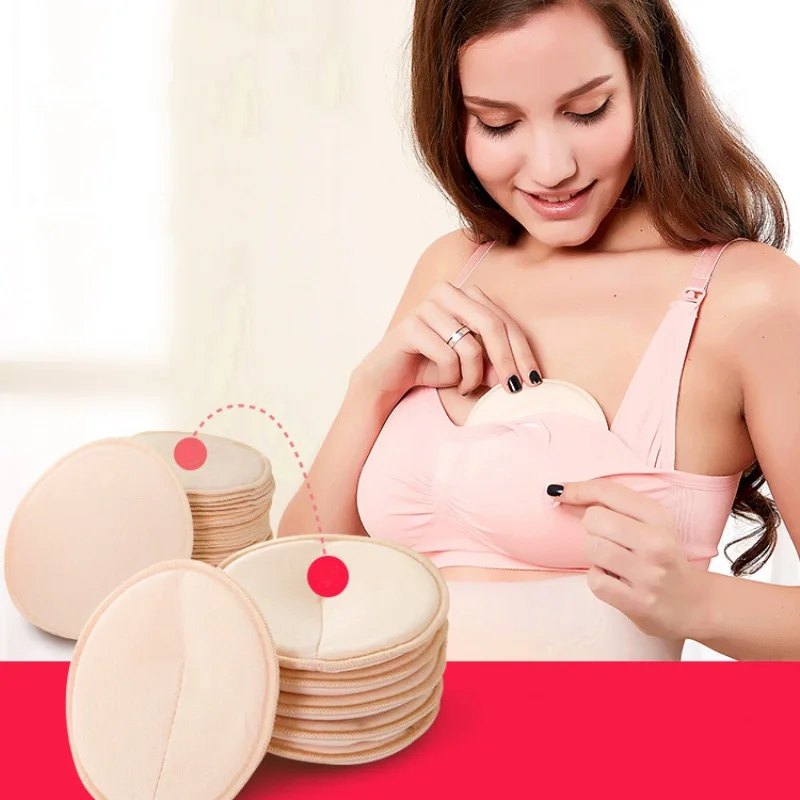
- Let him eat his way – much or little, fast or slowly, steady or start-and-stop.
- Bring him to the table with you when you eat. He loves being with you, and he begins learning what eating is all about.
- Talk or play awhile after feeding. Put him to bed when he’s calm and drowsy and let him put himself to sleep.
Wait to start solids
Start solids based on what your baby can do, not on how old he is: when he can sit up, see food coming, and open up for it. That is around six months for most babies.
back to top
Feeding booklet offers you a quick and easy way to do well with solid foods.
Feeding video shows you how to feed solid foods and that each child is different.
5 to 9 Months
Feeding Your Older Baby
Your older baby’s learning to eat solid foods goes along with her interest in the world. She watches you eat, and she wants to eat, too. Go by what your baby can do, not by how old she is to guide starting and progressing solid foods. Then let her do it her way. One baby will accept solid foods from the start, quickly learn to close her lips over the spoon and swallow, accept thicker, lumpier food, and be ready by 7 to 10 months to finger-feed herself modified family food at family meals. Another cautiously accepts solids but needs to be introduced gradually to a variety of tastes and textures and get to family meals when she is in her second or even third year. Another takes to the spoon readily and demands to feed herself—even though she can’t! Still another isn’t at all interested in the spoon, and waits to eat solid foods until she can finger-feed herself family food.
Then let her do it her way. One baby will accept solid foods from the start, quickly learn to close her lips over the spoon and swallow, accept thicker, lumpier food, and be ready by 7 to 10 months to finger-feed herself modified family food at family meals. Another cautiously accepts solids but needs to be introduced gradually to a variety of tastes and textures and get to family meals when she is in her second or even third year. Another takes to the spoon readily and demands to feed herself—even though she can’t! Still another isn’t at all interested in the spoon, and waits to eat solid foods until she can finger-feed herself family food.
Start solids based on what your baby can
doThis point is NOT to get food into your baby. She is getting plenty of nourishment from her breastmilk or formula. It is to introduce her to the notion of eating different food, in a different way. Stow your agenda, and don’t get pushy or you will spoil the fun for both of you! Your baby is ready to be introduced to solid foods when she can:
- Sit up
- Do something with the spoon.
 It is all learning and it is all part of growing up with eating.
It is all learning and it is all part of growing up with eating. - Open up for it, get the food into her mouth.
- Grab it and bang it.
- Drop it on the floor.
- Touch the food and smear it around.
How to introduce solid foods (provided your child is willing):
- Have her sit in a high chair looking straight ahead.
- Hold the spoon a few inches in front of her mouth and wait to see what she does.
- Do it her way: let her eat or not eat, eat little or much, fast or slow.
- Stop the feeding when she is done opening, swallowing, smearing, dropping, banging.
- Give her plenty of chances to learn, have fun, and keep it casual.
Move on to thicker and lumpier foods
You will help your baby to develop her mouth skills by offering her thicker and lumpier food and then pieces of soft family food at family meals. She will eat more regularly and at longer intervals, so feeding times are partly on demand and partly on a schedule that you determine. Feeding her will go best if you get started now with family meals.
Feeding her will go best if you get started now with family meals.
back to top
Zubin
To Watch Zubin - Click Here
Feeding video shows Madison and Daniel at their first family meal!
7 to 15 Months
Feeding Your Almost-Toddler
The almost-toddler – the child just getting started with finger-feeding – cares deeply about feeding himself and is enthusiastic about eating almost everything you put before him. The problem is that it happens so fast. One day he happily lets you feed him. The very next day – or the very next meal – he refuses the spoon, grabs at it, and puts up a fuss when you try to feed him. Many parents become alarmed and force or play games to get their child to eat. Don’t. His eating will be worse, not better, and you will introduce feeding struggles that can go on for years. Instead, let him feed himself. Get started with family meals, if you aren’t having them already, and eat with him, don’t just feed him.
Instead, let him feed himself. Get started with family meals, if you aren’t having them already, and eat with him, don’t just feed him.
Include your child in family meals
- Offer your child safe food to pick up, chew and swallow: soft or easily chewed table food. Be considerate without catering with meal-planning.
- Let him eat his way-fingers or spoon, much or little, fast or slowly, and in any order – even if he eats dessert first.
- Offer breastmilk or formula in a cup, not a bottle. He may have whole milk when he is eating family food at mealtime and is a year or more old.
- Give him about a tablespoon of each food. Let him eat or not. Let him have more if he wants.
- Give him lots of chances to try new food and learn to like it.
- Let him get down when he finishes – even after just a few minutes.
Get started with sit-down snacks
During the older baby stage, in response to your child’s increased regularity with feeding, you offered snacks partly on demand and partly on a schedule that you determined. At the almost-toddler stage, you continue to support his transition from demand feeding to structure by offering your child sit-down snacks roughly every two or three hours between meals. That lets him arrive at mealtime hungry (but not starved) and therefore able to behave nicely: He is interested in eating the food there. While he is likely to love drinking and eating on the go, he won’t learn to eat the food you eat because his special food, delivered in his special way, is more to his liking. Offer any nipple-feedings (breastmilk or formula) as a structured, sit-down snack. Don’t offer anything else between times except water. You are establishing the meals-plus-snacks routine of the division of responsibility for older children: Parents do the what, when and where of feeding, children do the how much and whether of eating.
At the almost-toddler stage, you continue to support his transition from demand feeding to structure by offering your child sit-down snacks roughly every two or three hours between meals. That lets him arrive at mealtime hungry (but not starved) and therefore able to behave nicely: He is interested in eating the food there. While he is likely to love drinking and eating on the go, he won’t learn to eat the food you eat because his special food, delivered in his special way, is more to his liking. Offer any nipple-feedings (breastmilk or formula) as a structured, sit-down snack. Don’t offer anything else between times except water. You are establishing the meals-plus-snacks routine of the division of responsibility for older children: Parents do the what, when and where of feeding, children do the how much and whether of eating.
back to top
Madison and Daniel
To Watch Madison and Daniel - Click Here
Feeding booklet helps you understand your toddler’s quirky eating!
Watching the toddlers on this video shows that
your toddler’s picky eating is normal.
11 to 36 Months
Feeding Your Toddler
After eating enthusiastically as an almost-toddler, your toddler’s eating will suddenly become cautious, erratic, picky, and fickle. Many times, she will only eat a few tastes, swallows, finger-fulls, or bites. Other times, she will eat more than you can imagine. Do not try in any way to get her to eat. Instead, give her both clear leadership and a sense of control.
- Get started with family meals, if you aren’t having them already.
- Give leadership by offering foods you choose, at sit-down meals and snacks, at regular and reliable times.
- At meals and snacks let her decide how much and even whether she eats from foods you have put on the table.
- Keep yourself comfortable by understanding her normal, erratic, eating behavior.
- Let her get down from the table when she loses interest in eating and/or starts to misbehave. Tell her, “Once you get down, you can’t come back.
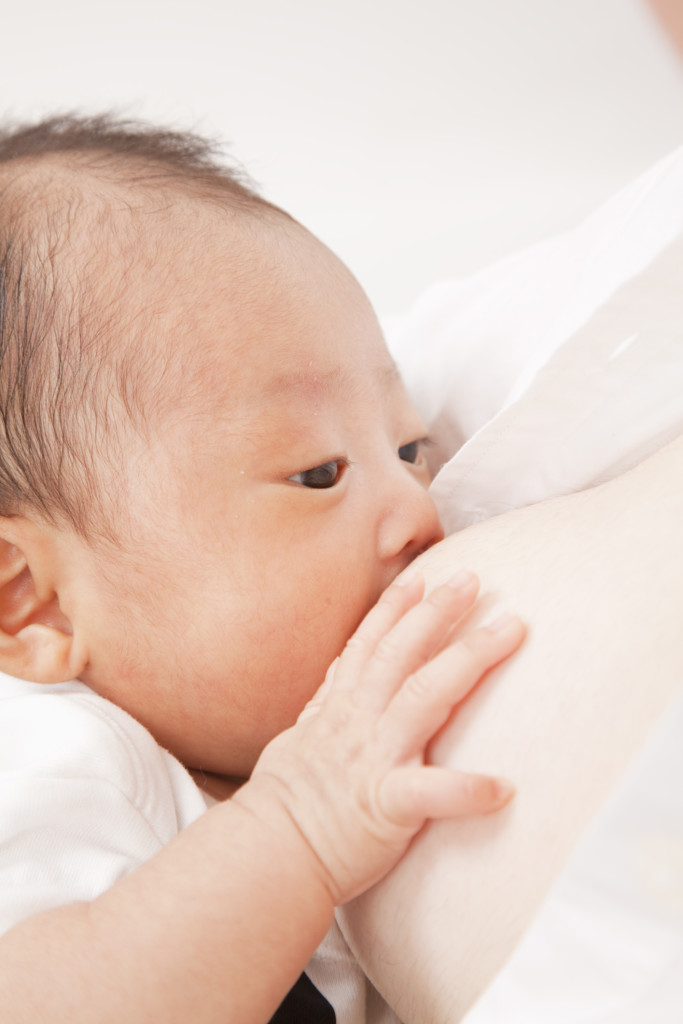 ”
” - Teach her to play quietly while you finish eating.
Don’t teach eating for emotional reasons
Your toddler is at high risk for learning to use food for emotional reasons. Toddlers are active, unceasing in their demands and prone to get upset. It is tempting to give food to quell the riot. Don’t. Instead, stick to scheduled feedings and sort out whether your child is hungry or sad, full or tired. Give attention, discipline, hugs or naps.
Maintain the quality of your feeding relationship
- Get your focus off what your child eats and on to how your child feels and behaves at family meals.
- Have 3 meals a day at set times and eat with her – don’t just feed her. Offer her sit-down snacks every 2 to 3 hours between times.
- Be considerate without catering with meal-planning. Include 1 or 2 foods she generally eats along with other mealtime food.
- She will be skeptical even of food she has eaten enthusiastically before, but do not short-order cook or limit the menu to foods she readily accepts.
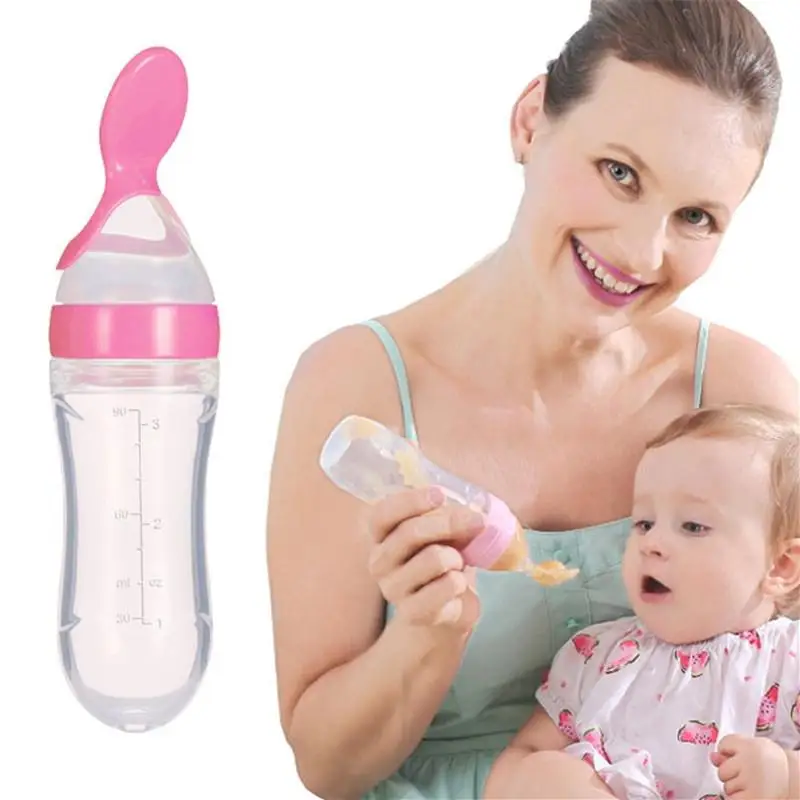 Instead, be considerate without catering in your meal-planning.
Instead, be considerate without catering in your meal-planning. - Let her eat her way – fingers or utensils, fast or slow, much or little, 1 or 2 foods, and in any order – even if she eats dessert first.
- Say no when she begs for food or drinks between times, except for water.
back to top
Feeding video shows preschoolers are full of surprises!
Your Child’s Weight reassures you that children come in all sizes.3 to 6 Years
Feeding Your Preschooler
Compared with feeding the toddler, feeding the preschooler is easy. Your preschooler is playful and quirky and wants to please you in all ways – including eating. But in some ways, that makes feeding harder. You can get your preschooler to eat more, less, or different foods than he wants. You can keep after him about table manners, even though it is still natural for him to use his fingers along with his silverware.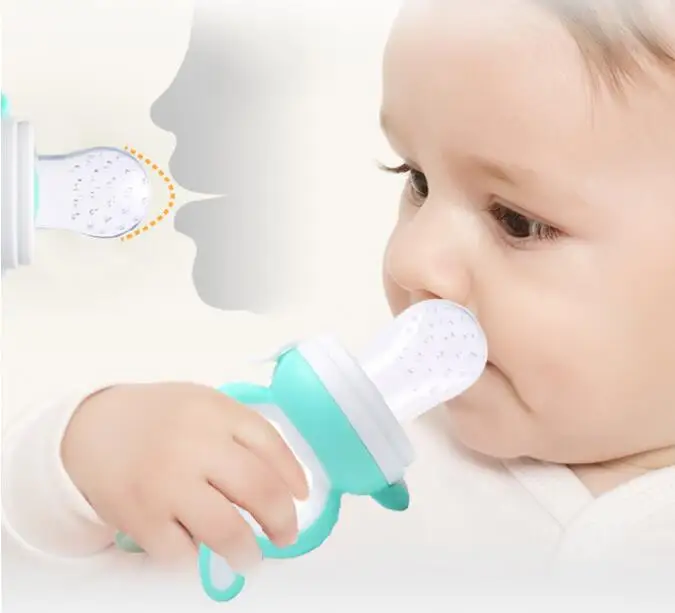 But if you do, it will make him feel bad about eating. He won’t enjoy learning to eat the foods you eat. He will stop being able to eat as much as he is hungry forl. He will, that is, provided he is a compliant child. If he is not so compliant, he will fight back and feeding will become a battle ground. Stow your agendas, make meals with food you enjoy, eat with him, and follow the division of responsibility in feeding. Then trust your preschooler manage his own eating.
But if you do, it will make him feel bad about eating. He won’t enjoy learning to eat the foods you eat. He will stop being able to eat as much as he is hungry forl. He will, that is, provided he is a compliant child. If he is not so compliant, he will fight back and feeding will become a battle ground. Stow your agendas, make meals with food you enjoy, eat with him, and follow the division of responsibility in feeding. Then trust your preschooler manage his own eating.
- Have 3 meals a day at set times and sit-down snacks at more-or-less set times. Say no to between-times food and beverage grazing – except for water.
- Sit down and eat with him, don’t just feed him. Be good company.
- Be family-friendly in your meal-planning by being considerate without catering. Put together meals that allow everyone to be successful.
- Let him serve himself and eat his way – fast or slow, much or little, 1 or 2 foods. Let him eat in any order, even if he eats dessert first.

- Let him have more of any food (except dessert), even if he hasn’t cleaned his plate.Excuse him when he is done.
back to top
Tiara
To Watch Tiara - Click Here
Family meals are still important. Let
Secrets help you!6 to 12 Years
Feeding Your School-age Child
Your school-age child is full of contradictions. She wants to master all things – including eating, but she is still a child, and is entitled to be free from worry about eating, moving, and weight. She seems independent, but she depends on you to keep control of the family menu and continues to need the structure and support of regular family meals and structured snacks.
Continue to follow the division of responsibility in feeding
- Do your jobs with feeding, and let your child do hers with eating.
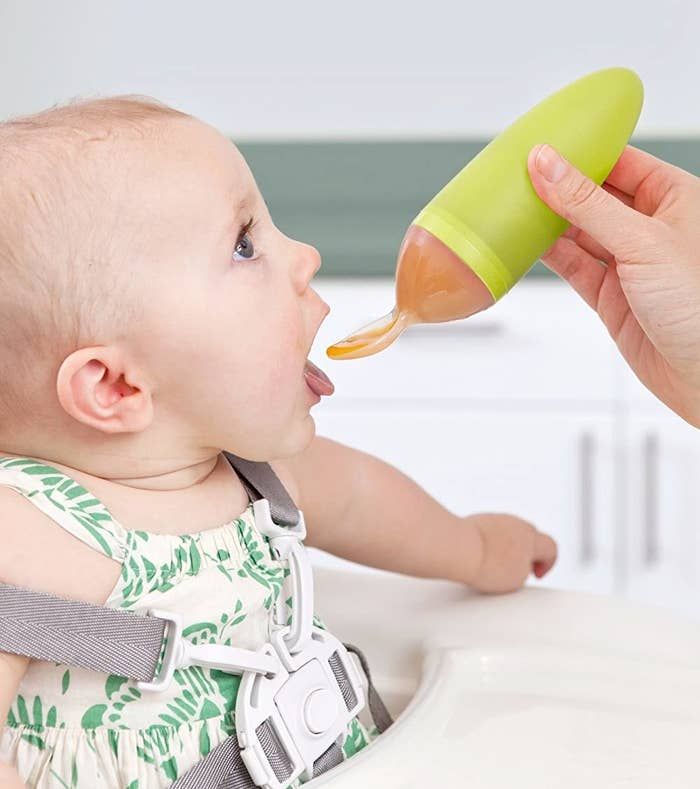
- Arrange for your child to have 3 family-friendly meals a day at set times.
- Let her eat her way-fast or slowly, much or little, some of everything or 1 or 2 foods.
- Let her eat in any order, even if she eats dessert first.
- Let her have more of any food, even if she hasn’t cleaned her plate.
- Say no to between-times food and beverage grazing-except for water.
Exert your authority on after-school snacking
- Make rules, then expect her to go by the rules. The rules are about structure.
- Teach her strategies for putting together a good-tasting and satisfying snack.
- Snack right after school and at the table. No munching along with homework or in front of the TV.
- After she learns to go by the rules and apply the strategies, let your older school-age child choose her own snack, even if it is forbidden food – high fat, high sugar.
back to top
Use
Secrets to teach your child to cook!12 to 17 Years
Feeding Your Adolescent
Despite his acting like it doesn’t matter, your adolescent continues to depend on you to maintain the structure of family meals.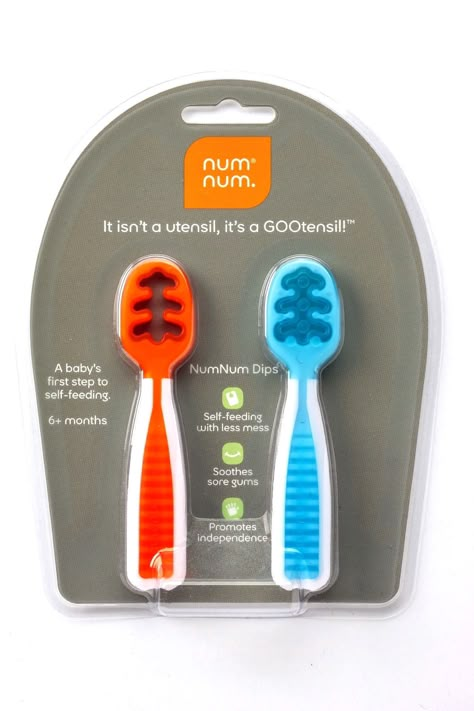 He will participate in family meals when you make meals a priority, keep mealtimes pleasant and use mealtimes for connecting. Adolescents who have family meals do better in all ways, and they do better nutritionally after they leave home. With feeding as with all other things, your task is to find the middle ground between being controlling on the one hand and throwing away all controls on the other.
He will participate in family meals when you make meals a priority, keep mealtimes pleasant and use mealtimes for connecting. Adolescents who have family meals do better in all ways, and they do better nutritionally after they leave home. With feeding as with all other things, your task is to find the middle ground between being controlling on the one hand and throwing away all controls on the other.
Continue to follow the division of responsibility in feeding
- Doing your jobs with feeding and letting your child do his with eating guides you in knowing when to take leadership and when to let go.
- Expect your child to manage his schedule and his snacking so he can arrive at dinner on time and hungry.
- Teach him to take responsibility for eating 3 meals a day and a snack right after school.
- Let him find his own ways with food away from home: what to eat, how much to eat, how to get what he needs.
- Discuss his food-management strategies with him; consider what works and what doesn’t.
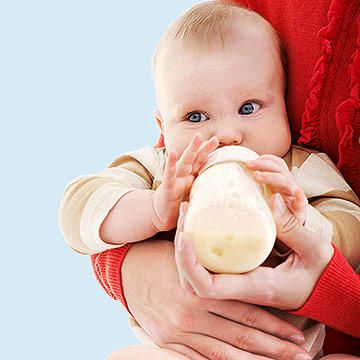
- Build your child’s food-management skills for after he leaves home: meal planning, food preparation, shopping, storage, sanitation.
back to top
Feeding Your Baby Solid Food
Nationwide Children’s Hospital
Babies should be fed only breastmilk or formula until about 6 months of age. Solid foods can then be started when your baby is ready. A baby is ready to eat from a spoon when he or she can maintain a sitting position while supported low at the hips, keep his or her tongue in the mouth and watch or act like they want to eat with others. If you question whether your baby is ready to start solid foods, please ask your pediatrician or dietitian.
You will need
- Small cup or bowl
- Sall baby spoon or plastic spoon
- Bibs
- Wet cloth or towel to wipe up spills
How to feed your baby
- Put the amount of solid food you plan to give into a bowl.
 Do not feed baby right from the jar because this may cause the remaining food to spoil faster. Cover the jar, place it in the refrigerator and use it within 2 days.
Do not feed baby right from the jar because this may cause the remaining food to spoil faster. Cover the jar, place it in the refrigerator and use it within 2 days. - A high chair or feeding chair should be used when you feed your baby. Always secure baby safely in the high chair using the seat strap. Never leave your baby alone in the high chair.
- Put a small amount of food on the tip of the spoon. Let your baby taste it. If he spits it out, place the food midway back on his tongue and let him swallow it. Have patience and let him learn how to swallow. Feed him slowly, allowing plenty of time to swallow the food. Remember, feeding will take time and be messy for a while.
- Never, ever, force your baby to eat. If baby is finished, stop offering food and try again at the next meal. It may take 10 to 20 tries before a food is accepted.
- Throw away any leftover food in the bowl after your baby is finished eating. Your baby may be finished eating if he does the following:
- Becomes distracted when eating
- Turns his head or closes his mouth
- Cries
- Spits out food
What to feed your baby
| 6 months old |
|
| 7 to 9 months old |
|
| 10 to 12 months old |
|
Safety tips
- Always supervise your baby’s meals.
- Avoid foods that may cause choking. In general, foods that may cause choking are smooth, round foods. Avoid pieces of hot dog, hard candies, nuts, seeds, grapes, popcorn, peanuts, raw carrots or pretzels.
- Your baby may be choking if: he cannot cough or cry; has a blue or purple face; grabs at the throat; has a weak cough, labored breathing, or loss of consciousness.
- Babies under 1 year of age should not be fed honey or foods that contain honey. Honey is not sterile. It may contain harmful bacteria that can cause illness in children younger than 1 year.
- Make sure the lids on jars of food are sealed tightly when you buy them. Do not buy the food if the seal is broken (if you press the top of the lid and it springs back, it means the seal is broken). Before opening the jar, wipe the jar and lid with a clean, damp cloth to remove dust.
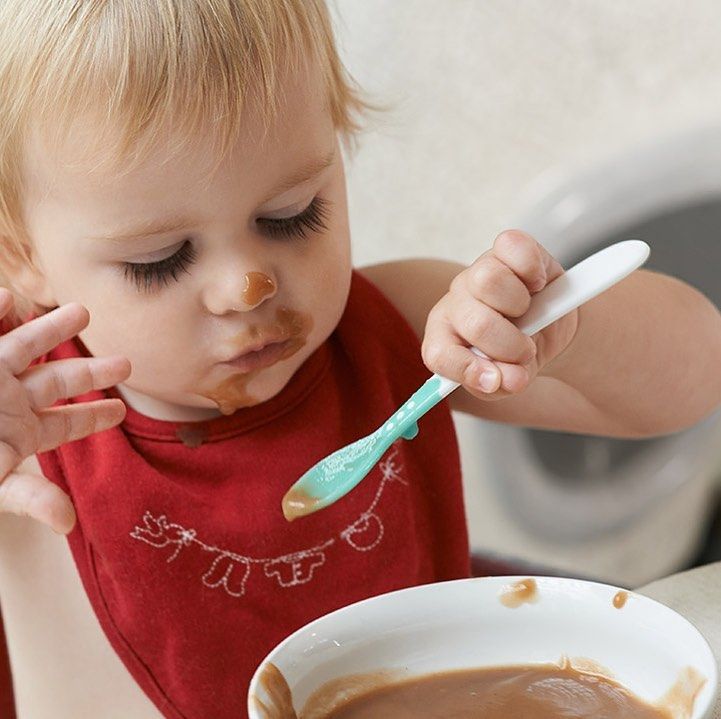
- Do not heat food in a microwave.
- All baby foods should be given with a spoon and not through a bottle, unless directed by your baby’s therapist or doctor.
Food allergies and food intolerance
When you add new foods to an infant's diet, food allergies or food intolerances sometimes develop. Some common symptoms of food allergies are:
- Skin rashes
- Severe vomiting after eating
- Hives like a skin rash (welts)
- Diarrhea
If your baby has any of the above symptoms, call your doctor for advice.
When you give new foods, give only one new food at a time. Then, wait 3 to 5 days before adding another new food.
- Other foods that baby has eaten before can also be given during this time.
- Try all plain foods before giving your baby mixed foods.
You can use the record in the PDF (download below) to keep a list of new foods and the date they were given. If a food allergy occurs, it will be easier for the doctor to know which food caused the allergy.
If a food allergy occurs, it will be easier for the doctor to know which food caused the allergy.
It may help to prevent food allergies in infants if you introduce eggs and age-appropriate foods that contain peanuts between 8 and 11 months of age. Try mixing 2 teaspoons of smooth peanut butter with hot water until it is a puree. Offer a small amount of this with close supervision.
If you have any questions, be sure to ask your baby’s doctor, nurse, or dietitian.
Feeding Your Baby Solid Foods (PDF)
HH-IV-8 12/80, Revised 8/17 Copyright 1980, Nationwide Children’s Hospital
Breastfeeding a newborn | What to Expect in the First Week
The first week of a baby's life is a wonderful but hectic time, especially if you haven't breastfed before. Our breastfeeding tips will help you settle in as quickly as possible
Share this information
The first time after childbirth, mothers are often confused. The body is still recovering, and you are already starting to get to know your newborn baby. The emotional state during this period can be unstable, especially between the second and fifth day, when many women have milk 1 and at the same time postpartum depression begins 2 . In addition, people around often expect (and demand) that a woman come to her senses as soon as possible and become a “super mom”. But the best thing to do this first week is just to be with your baby and get breastfeeding going.
The body is still recovering, and you are already starting to get to know your newborn baby. The emotional state during this period can be unstable, especially between the second and fifth day, when many women have milk 1 and at the same time postpartum depression begins 2 . In addition, people around often expect (and demand) that a woman come to her senses as soon as possible and become a “super mom”. But the best thing to do this first week is just to be with your baby and get breastfeeding going.
When should I start breastfeeding my newborn?
Try to breastfeed your baby within the first hour after birth. When the baby latch onto the breast and begins sucking rhythmically, it stimulates the mammary gland cells and starts milk production. 1 It is not for nothing that this time is called the “magic hour”!
“Ideally, the baby should be placed on the mother's stomach immediately after birth so that it can immediately attach to the breast. He won't necessarily eat, but he should be able to,” explains Cathy Garbin, an internationally recognized expert on breastfeeding.
He won't necessarily eat, but he should be able to,” explains Cathy Garbin, an internationally recognized expert on breastfeeding.
“Hold your baby and let him find the breast on his own and put the nipple in his mouth. This is called the breast-seeking reflex. On the Internet you can watch videos that show what this process looks like. If the baby does not latch onto the nipple on its own, the midwife will help to properly attach it to the breast. But for starters, it’s good to give the baby the opportunity to do it on their own. In this case, the optimal position for the mother is reclining. ”
Don't spend that special first hour of your baby's life weighing and swaddling—or at least wait until he's suckling for the first time. Enjoy hugs and close skin-to-skin contact. This promotes the production of oxytocin, the hormone of love, in you and your baby, and oxytocin plays a key role in the supply of the first breast milk - colostrum. 3
“As soon as the obstetricians were convinced that our son was healthy, the three of us — me, my husband and our baby — were left to give us the opportunity to get to know each other. It was a very special hour - an hour of awkwardness, turbulent emotions and bliss. During this time, I breastfed my son twice, ”recalls Ellie, a mother of two from the UK.
It was a very special hour - an hour of awkwardness, turbulent emotions and bliss. During this time, I breastfed my son twice, ”recalls Ellie, a mother of two from the UK.
Did you know that breastfeeding helps to recover after childbirth? This is because oxytocin stimulates uterine contractions. In the first hours after childbirth, this contributes to the natural release of the placenta and reduces blood loss. 4
What if the birth did not go according to plan?
If you had a cesarean section or other complications during childbirth,
You can still make skin-to-skin contact with your baby and breastfeed him in the first hours after birth.
“If you can't hold your baby, have your partner do it for you and make skin-to-skin contact with the baby. This will give the baby a sense of security, care and warmth so that he can hold on until you recover, ”Katie advises.
If the baby is unable to breastfeed, it is advisable to start expressing milk as early as possible and do so as often as possible until the baby is able to feed on its own. “While breastfeeding in the first hours after birth lays an excellent foundation for the future, it is not so important,” Cathy reassures. “It is much more important to start lactation so that in the future, if necessary, you can start breastfeeding.”
“While breastfeeding in the first hours after birth lays an excellent foundation for the future, it is not so important,” Cathy reassures. “It is much more important to start lactation so that in the future, if necessary, you can start breastfeeding.”
To start milk production, you can express milk manually or use a breast pump that can be given to you at the hospital. 5 And with expressed precious colostrum, it will be possible to feed the child. This is especially important if the baby was born premature or weak, since breast milk is extremely healthy.
If a baby was born prematurely or has a medical condition and cannot be breastfed immediately, this is no reason not to continue breastfeeding. “I have worked with many new mothers who were unable to breastfeed their baby for the first six weeks due to preterm labor or other reasons. Nevertheless, all of them later successfully switched to breastfeeding,” says Kathy.
Does the baby latch on correctly?
Correct breastfeeding is essential for successful breastfeeding 6 , as it determines how effectively the baby will suckle milk and hence grow and develop. Latching on the breast incorrectly can cause sore or damaged nipples, so don't hesitate to ask your doctor to check that your baby is properly attached to the breast, even if you are told that everything is fine and you do not see obvious problems - especially while you are in the hospital.
Latching on the breast incorrectly can cause sore or damaged nipples, so don't hesitate to ask your doctor to check that your baby is properly attached to the breast, even if you are told that everything is fine and you do not see obvious problems - especially while you are in the hospital.
“While I was in the hospital, I called the doctor at every feed and asked me to check if I was breastfeeding correctly,” says Emma, mother of two from Australia. - There were several cases when it seemed to me that everything seemed to be right, but it was painful to feed, and the doctor helped me take the baby off the breast and attach it correctly. By the time I was discharged, I had already learned to do it confidently.”
When applying to the breast, point the nipple towards the palate. This will allow the baby to take the nipple and part of the areola under it into their mouth. It will be easier for him to suck if he has both the nipple and part of the areola around in his mouth.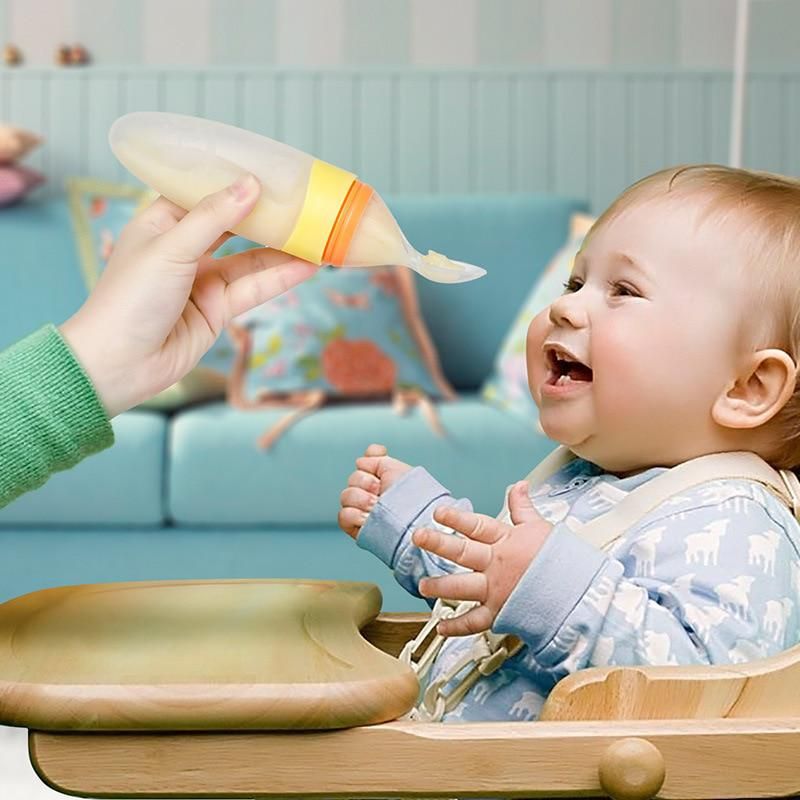 6
6
“When a baby latch on properly, it doesn't cause discomfort and it causes a pulling sensation, not pain,” Cathy explains. - The baby's mouth is wide open, the lower lip may be slightly turned outward, and the upper one lies comfortably on the chest. The body language of the child indicates that he is comfortable. There isn't much milk at this early stage, so you probably won't notice your baby swallowing, but he will suckle a lot and nurse frequently."
How often should a newborn be fed?
The frequency and duration of breastfeeding in the first week can vary greatly. “The first 24 hours of life are completely different for different children. Someone sleeps a lot (after all, childbirth is tiring!), And someone often eats, says Katie. - Such a variety greatly confuses young mothers. Everyone gives different advice, so it's important to remember that every mother and child is different."
“Colostrum is thicker than mature breast milk and is produced in smaller amounts, but has many benefits.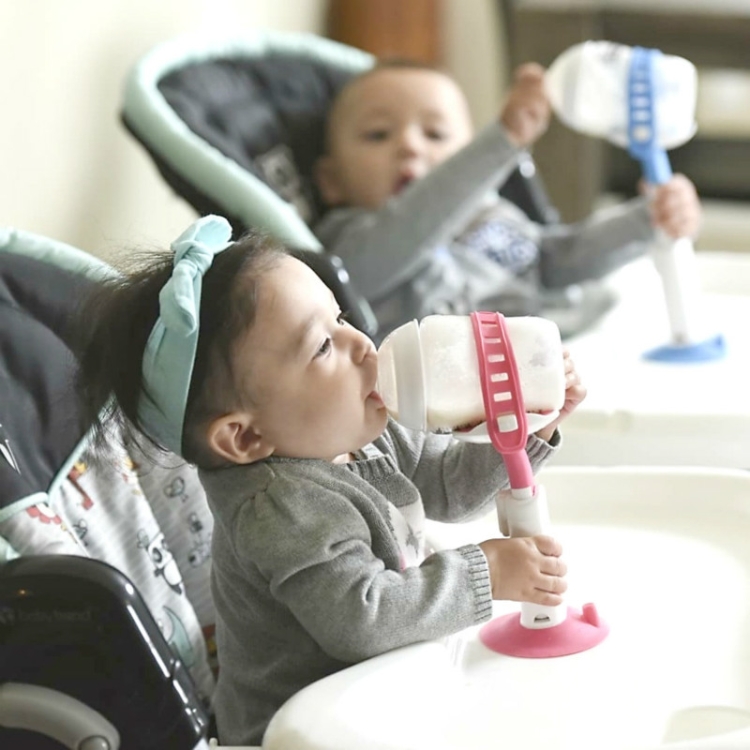 When the baby eats colostrum, he learns to suck, swallow and breathe until milk begins to flow in more volume, ”explains Cathy.
When the baby eats colostrum, he learns to suck, swallow and breathe until milk begins to flow in more volume, ”explains Cathy.
Milk usually arrives on the second or fourth day after birth. Until this time, the baby is applied to the breast 8-12 times a day (and sometimes more often!), including at night. 7 Feeding may last 10-15 minutes at this stage, or 45 minutes or even an hour, as the baby is just beginning to develop the muscles and coordination needed to suckle effectively.
“At first, the intensity of feeding is very high, often higher than many people realize, and this is shocking to most new mothers,” says Cathy. - Sometimes mom has no time to go to the toilet, take a shower and have a snack. It usually comes as a surprise."
Camille, a mother from Australia, experienced this. “The first week, Frankie ate every two hours, day and night, and each time it took half an hour to an hour to feed,” she recalls. “My husband and I were completely exhausted!”
Do I need to feed my newborn on a schedule?
The good news is that frequent feeding promotes lactation and stimulates milk production.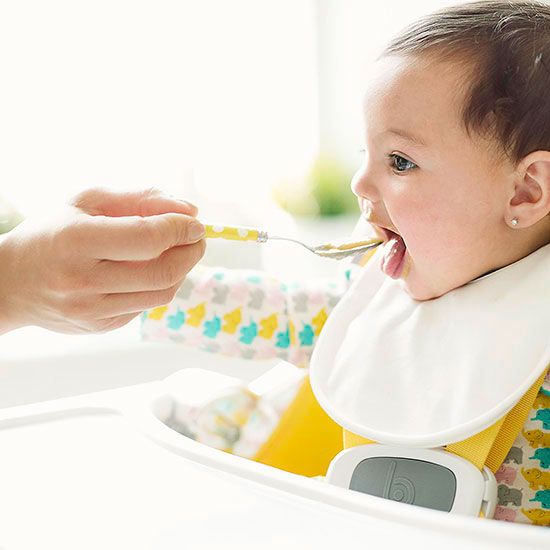 7 The more your baby eats, the more milk you will have. Therefore, forget about feeding your newborn on a schedule - this way he will have less chance of feeding. Try to feed your baby when he signals that he is hungry 8 :
7 The more your baby eats, the more milk you will have. Therefore, forget about feeding your newborn on a schedule - this way he will have less chance of feeding. Try to feed your baby when he signals that he is hungry 8 :
- tossing and turning in her sleep;
- opens eyes;
- turns his head if he feels a touch on his cheek;
- sticks out tongue;
- groans;
- licks lips;
- sucks fingers;
- is naughty;
- whimpers;
- is crying.
Crying is the last sign of hunger, so when in doubt, just offer your baby the breast. If he bursts into tears, it will be more difficult to feed him, especially at first, when both of you are just learning how to do it. As your baby grows, he will likely eat less frequently and take less time to feed, so breastfeeding will seem more predictable.
Does breastfeeding hurt?
You may have heard that breastfeeding is not painful at all, but in fact, in the first days, many new mothers experience discomfort.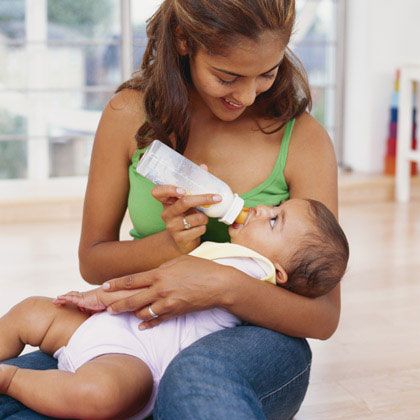 And this is not at all surprising, given that the nipples are not used to such frequent and strong sucking.
And this is not at all surprising, given that the nipples are not used to such frequent and strong sucking.
“Breastfeeding can be uncomfortable for the first couple of days – your body and your baby are just getting used to it. If a baby eats for too long and does not latch well, the sensations are almost the same as from unworn new shoes, Cathy compares. Just as tight shoes can rub your feet, improper suckling can damage your nipples. Prevention is always better than cure, so if the pain persists after a few days of feeding, contact a lactation consultant or healthcare professional.”
Maria, a mother from Canada, agrees: “Although my son seemed to latch onto the breast well, he damaged his nipples while feeding, and I was in pain. As it turned out, the reason was a shortened frenulum of the tongue. The breastfeeding specialists at our city clinic have been of great help in diagnosis and treatment.”
In addition, you may experience period cramps during the first few days after breastfeeding, especially if this is not your first baby. This is the so-called postpartum pain. The fact is that oxytocin, which is released during breastfeeding, contributes to further contraction of the uterus to restore its normal size. 4
This is the so-called postpartum pain. The fact is that oxytocin, which is released during breastfeeding, contributes to further contraction of the uterus to restore its normal size. 4
When milk arrives, the breasts usually become fuller, firmer and larger than before delivery. In some women, the breasts swell, harden and become very sensitive - swelling of the mammary glands occurs. 10 Frequent breastfeeding relieves these symptoms. For more breast care tips, read our article What is Breast Swelling?
How often does the newborn urinate and defecate?
What goes into the body must go back out. Colostrum
has a laxative effect, helping to eliminate meconium - the original feces. It looks a little scary - black and sticky, like tar. 11 But don't worry, it won't always be like this. Breastfed babies usually have a slightly sweet smell of stool.
How many times a day you will need to change diapers and how the contents should look like, see below.![]()
Day one
- Frequency: once or more.
- Colour: greenish black.
- Texture: sticky like tar.
Day two
- Frequency: twice or more.
- Colour: dark greenish brown.
- Texture: less sticky.
Day three
- Frequency: twice or more.
- Colour: greenish brown to brownish yellow.
- Texture: non-sticky.
Fourth day and then the entire first month
- Frequency: twice or more.
- Color: yellow (feces should turn yellow no later than by the end of the fourth day).
- Texture: grainy (like mustard with grains interspersed). Leaky and watery.
The baby's urine should be light yellow. On average, babies urinate once a day for the first two days. Starting around the third day, the number of wet diapers increases to three, and from the fifth day onwards, diapers have to be changed five times a day or more often.![]() In addition, during the first few days, the weight of wet diapers increases. 11
In addition, during the first few days, the weight of wet diapers increases. 11
Is the baby getting enough breast milk?
Since very little milk is produced at first,
You may feel that this is not enough for your baby. But if you feed your baby on demand, you will produce exactly as much milk as he needs. If you want to keep the process under control, be guided by the frequency of diaper changes above. If your baby soils less diapers, check with your doctor.
“For the first three or four weeks, most babies just eat and sleep. If the child is worried and constantly asks for a breast, you should consult with your doctor, ”Katie recommends.
Sometimes the baby may vomit after feeding. If the vomit is the color of milk, this is not a cause for concern. But if there are orange, red, green, brown or black blotches in it, or the child vomits with a "fountain", consult a doctor. You should also consult a doctor if the baby has a high temperature, the fontanel (soft spot on the head) has sunk, blood is found in the stool, and also if the weight recorded at birth has not recovered within two weeks.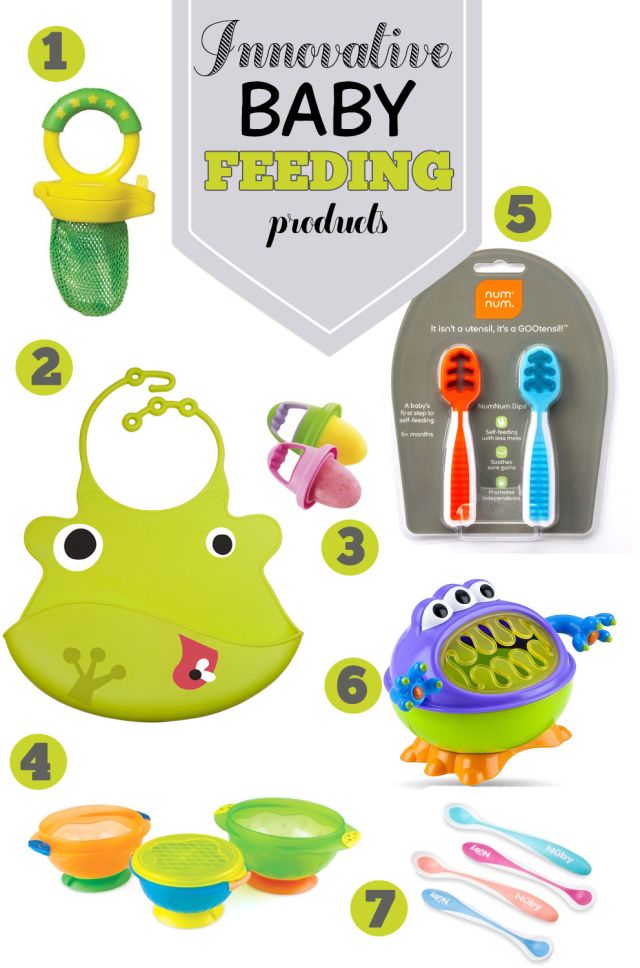 11
11
But if there are no frightening symptoms and the baby is growing at a normal pace, it means that he has enough milk. Soon you will both get used to breastfeeding and establish a more stable routine.
For the next step in breastfeeding, see Breastfeeding in the First Month: What to Expect.
Literature
1 Pang WW, Hartmann PE. Initiation of human lactation: secretory differentiation and secretory activation. J Mammary Gland Biol Neoplasia 2007;12(4):211-221. - Pang, W.W., Hartmann, P.I., "Lactation initiation in the lactating mother: secretory differentiation and secretory activation." G Mammary Gland Biol Neoplasia. 2007;12(4):211-221.
2 Shashi R et al. Postpartum psychiatric disorders: Early diagnosis and management. Indian J Psychiatry .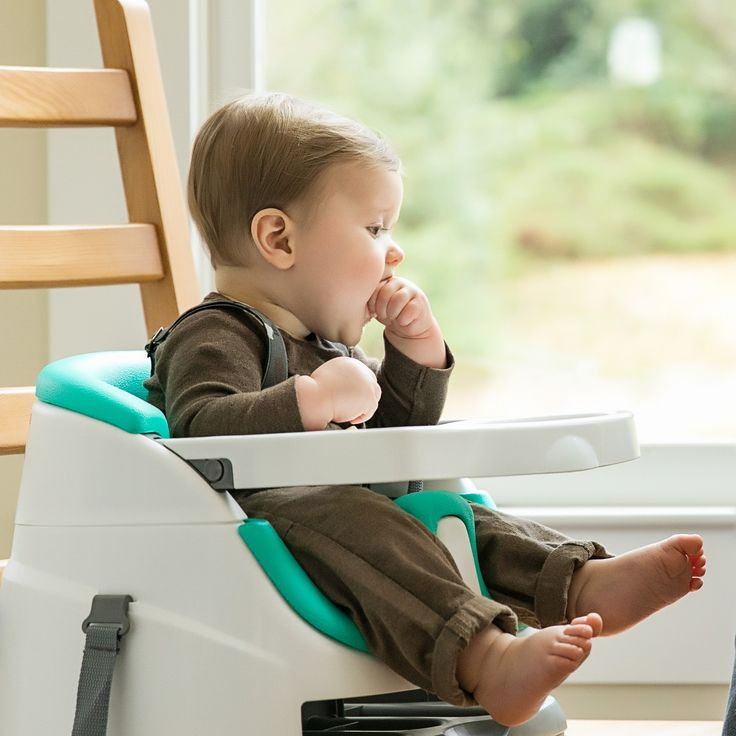 2015; 57( Suppl 2): S 216– S 221. - Shashi R. et al., Postnatal mental disorders: early diagnosis and treatment. Indian J Saikiatri. 2015; 57(App 2):S216-S221.
2015; 57( Suppl 2): S 216– S 221. - Shashi R. et al., Postnatal mental disorders: early diagnosis and treatment. Indian J Saikiatri. 2015; 57(App 2):S216-S221.
3 Moberg KU, Prime DK. Oxytocin effects in mothers and infants during breastfeeding. Infant . 2013;9(6):201-206. - Moberg K, Prime DK, "The effects of oxytocin on mother and child during breastfeeding." Infant. 2013;9(6):201-206.
4 Sobhy SI, Mohame NA. The effect of early initiation of breast feeding on the amount of vaginal blood loss during the fourth stage of labor. J Egypt Public Health Assoc . 2004;79(1-2):1-12. - Sobhi SI, Moham NA, "Early initiation of breastfeeding and its effect on vaginal bleeding in the fourth stage of labor." G Egypt Public Health Assoc. 2004;79(1-2):1-2.
2004;79(1-2):1-2.
5 Meier PP et al. Which breast pump for which mother: an evidence-based approach to individualizing breast pump technology. J Perinatol . 2016;36(7):493. - Meyer P.P. et al., Breastpump Selection: A Scientific Approach to Customizing Pumping Technology. J Perinatol (Journal of Perinatology). 2016;36(7):493-499.
6 Cadwell K. Latching - On and Suckling of the Healthy Term Neonate: Breastfeeding Assessment. J Midwifery & Women ’ s 2007;52(6):638-642. — Cadwell, K., "Latching and sucking in healthy newborns: evaluation of breastfeeding." W Midwifery Women Health. 2007;52(6):638-642.
7 Kent JC et al. Principles for maintaining or increasing breast milk production. 2012;41(1):114-121. - Kent J.S. et al. , "Principles for Maintaining and Increasing Milk Production". J Obstet Ginecol Neoneutal Nurs. 2012;41(1):114-121.
, "Principles for Maintaining and Increasing Milk Production". J Obstet Ginecol Neoneutal Nurs. 2012;41(1):114-121.
8 Australian Breastfeeding Association [ Internet ]. Feeding cues ; 2017 Sep [ cited 2018 Feb ]. - Australian Breastfeeding Association [Internet], Feed Ready Signals; September 2017 [cited February 2018]
9 Jacobs A et al. S3-guidelines for the treatment of inflammatory breast disease during the lactation period. Geburtshilfe Frauenheilkd . 2013;73(12):1202-1208. - Jacobs A. et al., "Guidelines S -3 for the management of inflammatory breast disease during breastfeeding." Geburtskhilfe und Frauenheilkünde. 2013;73(12):1202-1208.
10 Lawrence RA, Lawrence RM. Breastfeeding: A guide for the medical profession. 7th ed. Maryland Heights MO, USA: Elsevier Mosby; 2010. 1128 p . - Lawrence R.A., Lawrence R.M., "Breastfeeding: A guide for healthcare professionals." Seventh edition. Publisher Maryland Heights , Missouri, USA: Elsevier Mosby; 2010. P. 1128.
Breastfeeding: A guide for the medical profession. 7th ed. Maryland Heights MO, USA: Elsevier Mosby; 2010. 1128 p . - Lawrence R.A., Lawrence R.M., "Breastfeeding: A guide for healthcare professionals." Seventh edition. Publisher Maryland Heights , Missouri, USA: Elsevier Mosby; 2010. P. 1128.
The period of breastfeeding is one of the most important stages of a child's life
The period of breastfeeding is one of the most important stages of a child's life, which can be regarded as a transitional period from intrauterine development to a full-fledged independent existence.
Man is born completely dependent on his mother, and nature has provided for the possibility of transferring all the necessary nutrients to the child through mother's milk.
The best food for a baby is the milk of his own mother, and this is understandable. The fact is that during pregnancy, the child and mother are practically a single organism, and it is very dangerous for the baby to lose this connection immediately, from the first minutes after birth. No wonder they often say that 9 months of pregnancy and at least 9months of breastfeeding - this is the full cycle of "bearing" the baby, necessary for its proper growth and development, as well as for the normal state of the mother.
No wonder they often say that 9 months of pregnancy and at least 9months of breastfeeding - this is the full cycle of "bearing" the baby, necessary for its proper growth and development, as well as for the normal state of the mother.
So why is breastfeeding so important?
First of all, mother's milk is the best food for a baby. The mother's body produces milk with exactly the properties that are necessary for a particular newborn - different women have slightly different composition of breast milk, adapted to meet the needs of her baby.
Mother's milk also changes its properties as the child grows. Often women try to "check" if their milk fits certain regimens and are upset that it is "low fat" or, conversely, "too fat". But it would be enough for them to simply understand that their body produces exactly the product that is designed specifically for their children, and that the differences between the milk of different women are caused precisely by the fact that their children are not the same.
However, if for some reason the mother cannot breastfeed the baby, then it is better for him to receive donor milk from another woman than artificial formulas or cow's milk.
It should be remembered that just as a woman cannot raise a healthy baby of any animal on her milk, so a cow is not able to give milk that is optimal for a human child. Cow's milk is for calves, just like women's milk is for children.
Human milk contains more than 400 components necessary for the optimal development of the child. Some of them have an anti-infective effect, they gradually form the child's immune system, protecting it from various infections.
Some of the antibodies contained in mother's milk protect the baby's gastrointestinal tract from the introduction of pathogenic microflora and help him develop normal microflora.
The amino acids contained in breast milk are involved in the proper development of the baby's central nervous system and brain.
It is not for nothing that children who are fed with mother's milk for at least a year develop better than their "artificial" peers, learn more easily both in the garden and then at school, grow up more calm and balanced.
It is no coincidence that we started talking about school: we must always remember that breastfeeding a baby is important not only during his first year, but throughout his life. In addition, it should be recalled that the enzymes that make up breast milk help the child to digest it more easily, breast milk vitamins are easily and completely absorbed by the baby's body, and proteins and fats are in the optimal amount for the newborn.
Many substances necessary for a child are contained not only in milk, but also in colostrum, which some time ago was considered a product completely useless for a child. And only in recent years, it has become clear to scientists that in no case should children be fed during the first hours and days of life with donor milk, which is not designed for them.
The baby is much healthier than its mother's colostrum, which contains substances that help the child's immature intestines adapt to a new way of eating. A child needs very little colostrum - just a few drops, and this is justified by the fact that the body of a newborn cannot yet digest a large amount of liquid.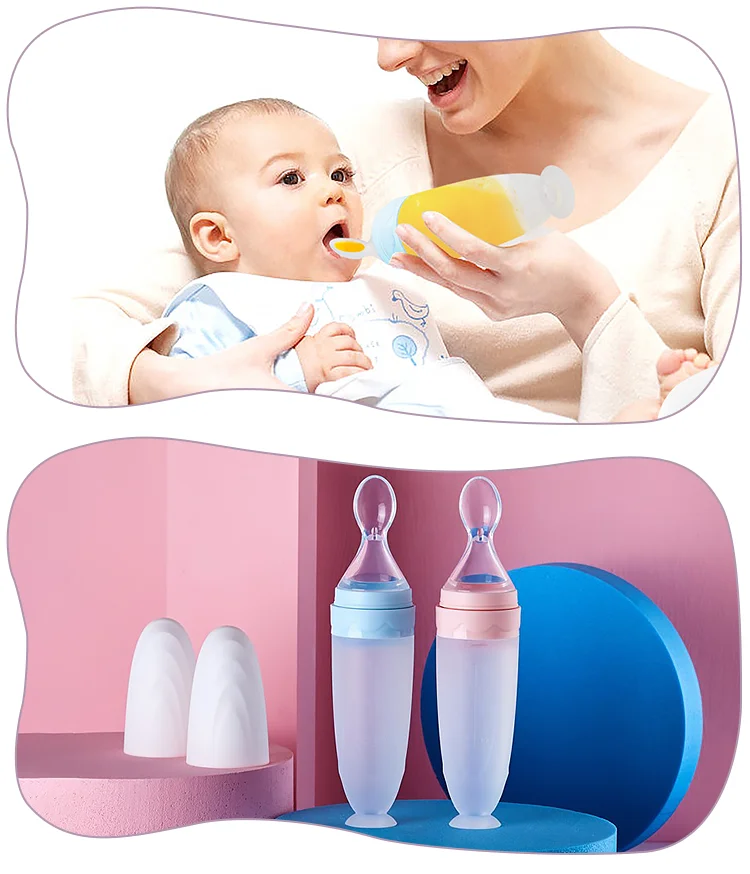
Therefore, we can say that the practice that exists in some maternity hospitals, and previously existed everywhere, the practice when the baby was fed with donor milk from a bottle for three days, and only on the third day was brought to the mother, does not hold water. Its results are mastopathy in the mother, jaundice in the child, and problems with the establishment of feeding in both. Colostrum is necessary for the baby, and early, immediately after childbirth, attachment to the breast is for the mother.
Early attachment to the breast is a natural end of childbirth, which is needed not only to feed the baby. The child begins to suckle the breast, the mother's uterus contracts, which helps to easily and painlessly exit the placenta.
In addition, contractions of the uterus during suckling by the baby of the breast rather quickly "put her in place" - and usually, the figure of a breastfeeding woman is restored somewhat faster than a woman whose child is bottle-fed.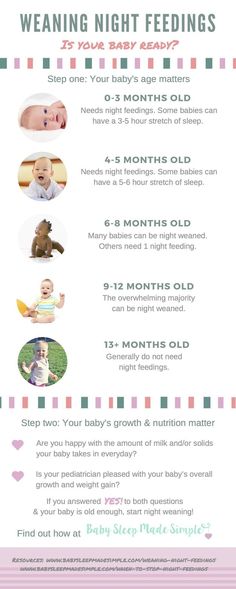 But, of course, much more early breastfeeding gives mom and baby psychologically.
But, of course, much more early breastfeeding gives mom and baby psychologically.
During the 9 months of intrauterine development, the child was in close contact with the mother. Having been born, he remembers her smell, her voice, her heartbeat, the taste of amniotic fluid. If you immediately pull him out of his usual environment, then the stress experienced by the baby may be unbearable for him.
Therefore, nature provided for such a kind of "return" to intrauterine life as breastfeeding. A child at the mother’s breast experiences almost the same sensations as before birth: he hears the familiar rhythm of his mother’s heart, her voice, inhales her smell, feels the warmth of her body, and the taste of milk, according to many experts, really resembles the taste of amniotic water.
That's why breastfeeding is more than a feeding process for a baby. It is also a kind of “relaxation” necessary for its normal growth and development.
Mom experiences the same thing.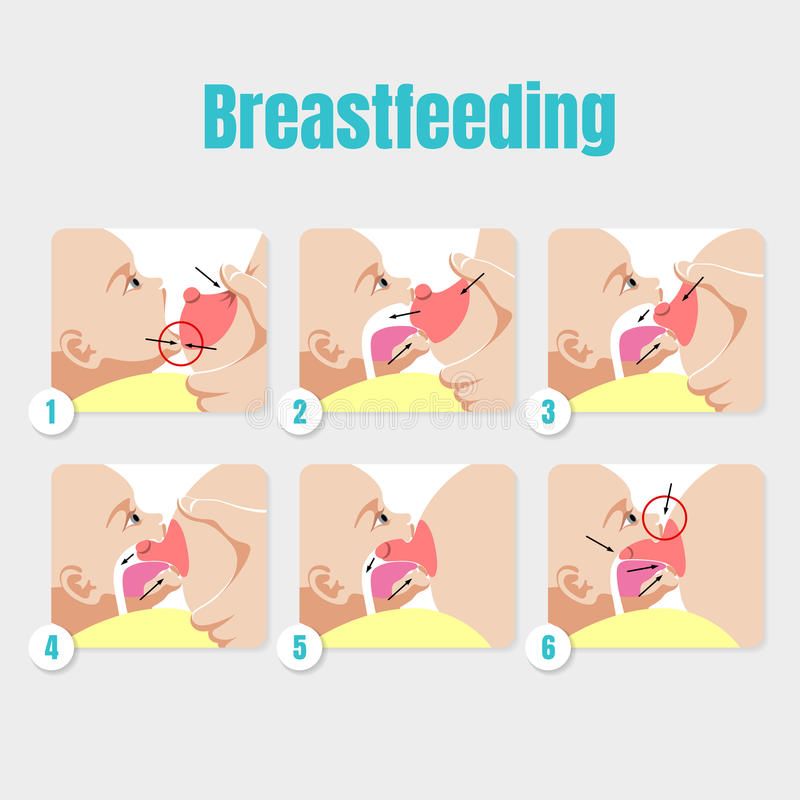 When she puts the child to her breast, she feels especially clearly that this is the same child that was in her womb. In addition, breastfeeding is the most important process of communication between mother and baby, necessary for both. Therefore, nothing should distract the mother from feeding: neither the phone, nor the book, nor the conversations, nor the TV. This is a complete concentration on the child, the moment at which mother and baby again become one.
When she puts the child to her breast, she feels especially clearly that this is the same child that was in her womb. In addition, breastfeeding is the most important process of communication between mother and baby, necessary for both. Therefore, nothing should distract the mother from feeding: neither the phone, nor the book, nor the conversations, nor the TV. This is a complete concentration on the child, the moment at which mother and baby again become one.
Mother's breasts are not only a source of nutrition. An anxious, frustrated child can also be attached to the chest. He will not eat more than necessary, and then he will not seek solace only in food - this is not true. He will just feel calm and comfortable next to his mother. In general, one should not be afraid to once again attach the baby to the chest, take it in his arms - this will not spoil the child, but on the contrary, will give him a sense of security and self-confidence.
Having started to crawl and walk, he won’t be able to pick himself up so easily, and as practice shows, by the end of the first year of life, the most active discoverers of this world are precisely those children who spent infancy in their mother’s arms, and not at all those whom forced to stay in bed.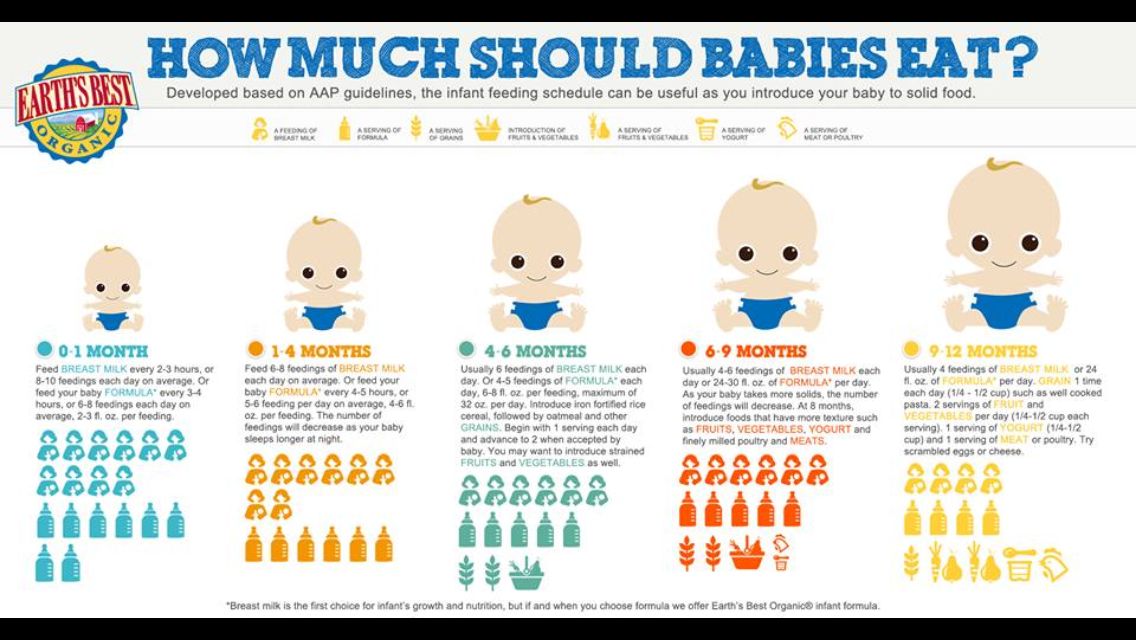 Mom's hands, a patchwork holder, or a "kangaroo" is much more natural than a crib, the baby's habitat.
Mom's hands, a patchwork holder, or a "kangaroo" is much more natural than a crib, the baby's habitat.
The same can be said about the notorious scheduled feedings. More and more neonatologists agree that breastfeeding should be as frequent as the child needs. Surprisingly, after a while the baby “sets” his own daily routine, and goes on for about the same three to three and a half hours between feedings.
The fact is that a child needs a mother's breast not only as a source of nutrition, but also as a "comforter", a source of warmth, comfort, a kind of link between him and the outside world.
In addition, even if we only talk about the nutrition of the child, then, as you know, everyone has a different appetite: in order to feel good, someone needs to eat three times a day and a lot, and someone needs six times a day, but only a little.
Newborn babies are as individual as their parents. Sometimes a baby, especially a young one, needs to be breastfed every hour, and sometimes more often.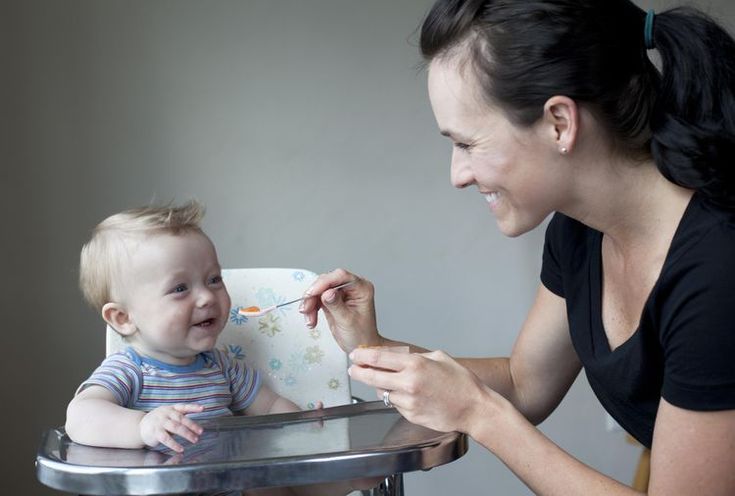 But all the inconvenience associated with feeding will pay off with interest. The main thing is not to be afraid to understand your child, listen to him and have no doubt that he is the one who knows what he wants better than all the authors of books.
But all the inconvenience associated with feeding will pay off with interest. The main thing is not to be afraid to understand your child, listen to him and have no doubt that he is the one who knows what he wants better than all the authors of books.
Mom's secrets: feeding outside the home.
Summer is the time for joint walks and small trips around the city, and it is very disappointing to be dependent on constant feedings when it comes to a baby in such a wonderful time of the year.
Get away from home and still breastfeed with our secrets for moms:
- - the baby sling can be adjusted so that the baby's mouth is just opposite the breast. And if you cover it with a hood, which usually comes with a sling, no one will even guess that the baby is doing an important job;
- - Nursing bra, button-down shirt and a small shawl (or neckerchief) will allow you to feed your baby while sitting on the subway, in the park, cafe or on the beach. If at the same time you do not bend to an unnatural position, but sit in a relaxed position, they will not pay attention to the nursing mother at all;
- - in summer everyone prefers open terraces, and the halls inside the cafe are often empty.
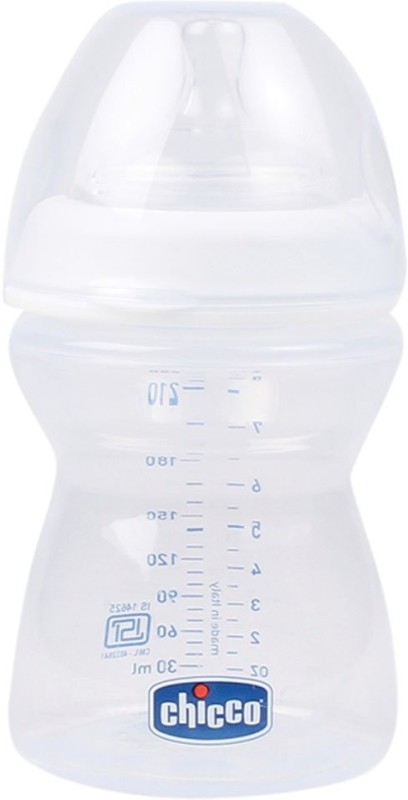 You can sit at one of the tables, and for complete peace of mind - put something voluminous on the table - the intimate process will go unnoticed;
You can sit at one of the tables, and for complete peace of mind - put something voluminous on the table - the intimate process will go unnoticed; - - in large cities, large shopping centers are equipped with mother and child rooms, and clinics are equipped with healthy baby rooms. You can build your route in advance, given the proximity of buildings where you can feed the child;
- - now in fashion - transformer capes of various shades. There are several options: some turn from a car seat cover into a shelter for mom and baby, others play the role of an apron that is worn around the mother’s neck and completely hides the child from prying eyes;
- - a time-tested option - a bottle with pre-expressed milk: simple, convenient, for the most shy.
Have a nice summer adventure!
Mother's nutrition during breastfeeding.
During pregnancy, mothers-to-be actively prepare for the arrival of their baby. They carefully think over the interior of the child's room, lovingly choose things for the baby, attend classes to prepare for childbirth. But not many people think about how important its first food is for the baby, or rather, the mother’s diet during breastfeeding. In fact, this is a separate topic that should be given special attention.
But not many people think about how important its first food is for the baby, or rather, the mother’s diet during breastfeeding. In fact, this is a separate topic that should be given special attention.
Mother's milk is very important for the development of the baby, it contains all the necessary substances for the baby. In addition, during feeding, a close bond is established between mother and baby. Clinging to his chest, the baby feels the warmth of the mother and the beating of her heart, at these moments he is absolutely happy and calm. In order for milk to regularly arrive and not disappear in one day, women need to consume at least 2000 calories, but the list of products should be limited.
So, in the first months of a baby's life, experts recommend sticking to a strict diet and focusing on proper nutrition while breastfeeding. At first, the list of products is very scarce, since the baby's gastrointestinal tract is still developing and adapting to our world. Mom's nutrition during breastfeeding during this period is as follows: buckwheat, barley and oatmeal, millet, pasta are allowed.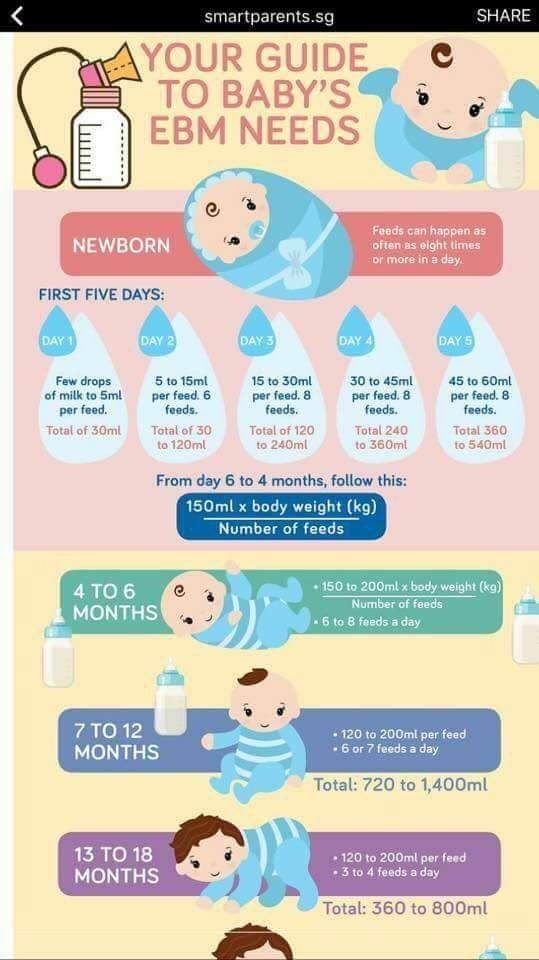 You can also introduce lean meats and white fish into the diet. From vegetables it is worth giving preference to potatoes, cauliflower and broccoli. Carrots and beets are allowed to be used in soups. For the fat content of milk, a young mother is recommended to include thirty grams of butter in her diet. Most likely, at the time of the rush of milk, you will want to consume dairy products in large quantities. Here it is worth noting one important point: choose milk, kefir and yoghurts without fruit additives and fillers. The ban includes: everything fried and smoked, black and red caviar, as well as products that cause the fermentation process - legumes, grapes, fresh bread. White cabbage, cucumbers, and apple peels can cause colic in a newborn.
You can also introduce lean meats and white fish into the diet. From vegetables it is worth giving preference to potatoes, cauliflower and broccoli. Carrots and beets are allowed to be used in soups. For the fat content of milk, a young mother is recommended to include thirty grams of butter in her diet. Most likely, at the time of the rush of milk, you will want to consume dairy products in large quantities. Here it is worth noting one important point: choose milk, kefir and yoghurts without fruit additives and fillers. The ban includes: everything fried and smoked, black and red caviar, as well as products that cause the fermentation process - legumes, grapes, fresh bread. White cabbage, cucumbers, and apple peels can cause colic in a newborn.
Remember, if you eat even a small piece of fresh bread or a handful of grapes, it can affect your baby greatly. The baby will simply have a stomach ache, the baby will cry during feeding, sleep poorly due to pain. Another reason for the diet is the possible occurrence of allergies.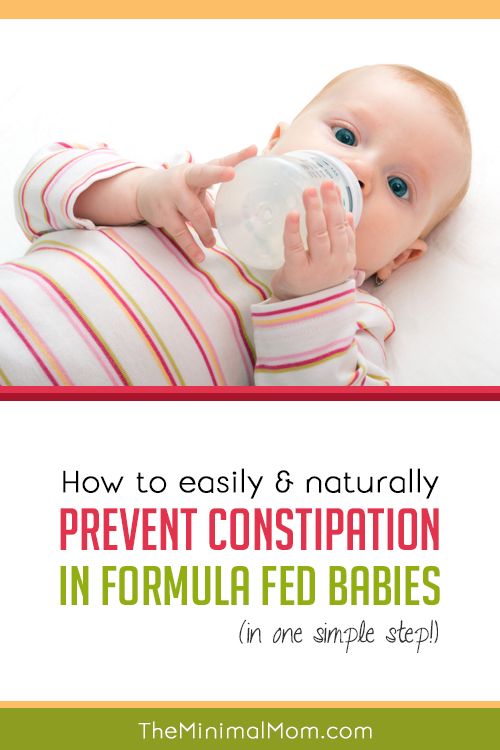

 These foods should be strained, mashed, or finely minced.
These foods should be strained, mashed, or finely minced.
